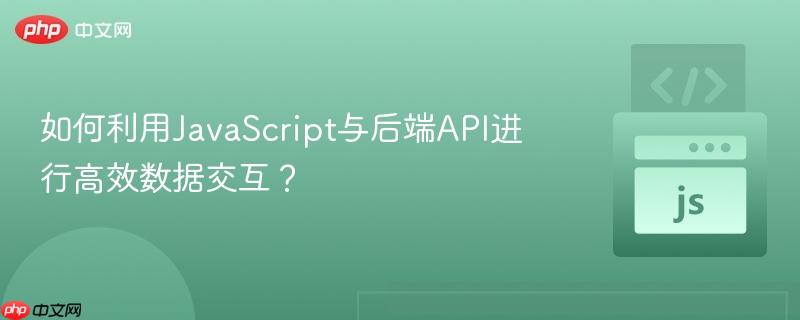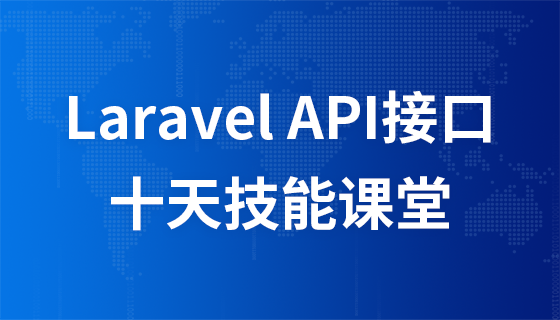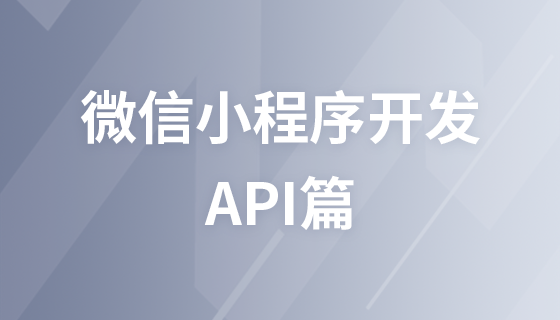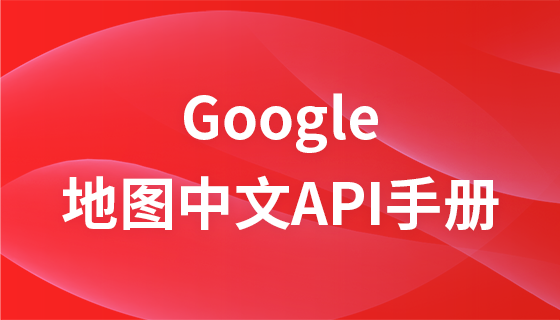答案:实现JavaScript与后端高效交互需使用Fetch API、封装请求函数、控制异步流程并优化用户体验。具体包括:采用Fetch发送GET/POST请求,统一处理鉴权与错误的apiClient封装,通过加载提示和防抖提升体验,配置代理解决跨域,确保生产环境CORS与Token安全验证。

要实现JavaScript与后端API的高效数据交互,关键在于选择合适的通信方式、优化请求流程、处理错误机制以及提升用户体验。以下是几个核心要点。
Fetch API是目前最推荐的方式,它基于Promise,语法简洁且原生支持JSON解析。
示例:发送GET请求获取用户数据
<pre class="brush:php;toolbar:false;">
fetch('/api/users')
.then(response => {
if (!response.ok) throw new Error('网络错误');
return response.json();
})
.then(data => console.log(data))
.catch(err => console.error('请求失败:', err));
发送POST请求提交数据时,需设置请求头和body:
立即学习“Java免费学习笔记(深入)”;
<pre class="brush:php;toolbar:false;">
fetch('/api/users', {
method: 'POST',
headers: {
'Content-Type': 'application/json'
},
body: JSON.stringify({ name: '张三', email: 'zhang@example.com' })
})
.then(res => res.json())
.then(data => console.log('创建成功:', data));
</font>
<H3>封装请求函数提升复用性</H3>
<p>将通用逻辑(如鉴权、错误处理)抽离成统一函数,避免重复代码。</p>
<p>例如创建一个通用的apiClient:</p>
<div class="aritcle_card">
<a class="aritcle_card_img" href="/ai/901">
<img src="https://img.php.cn/upload/ai_manual/000/000/000/175679989458289.png" alt="知我AI·PC客户端">
</a>
<div class="aritcle_card_info">
<a href="/ai/901">知我AI·PC客户端</a>
<p>离线运行 AI 大模型,构建你的私有个人知识库,对话式提取文件知识,保证个人文件数据安全</p>
<div class="">
<img src="/static/images/card_xiazai.png" alt="知我AI·PC客户端">
<span>0</span>
</div>
</div>
<a href="/ai/901" class="aritcle_card_btn">
<span>查看详情</span>
<img src="/static/images/cardxiayige-3.png" alt="知我AI·PC客户端">
</a>
</div>
<font color="#666666">
<pre class="brush:php;toolbar:false;"><code>
async function apiClient(url, options = {}) {
const config = {
headers: {
'Content-Type': 'application/json',
'Authorization': `Bearer ${localStorage.getItem('token')}`
},
...options
};
try {
const response = await fetch(url, config);
if (!response.ok) throw new Error(`HTTP ${response.status}`);
return await response.json();
} catch (error) {
console.error('API调用失败:', error);
throw error;
}
}
// 使用方式
apiClient('/api/profile').then(data => renderProfile(data));
避免界面卡顿,通过异步加载和状态提示提升体验。
在请求开始前显示加载中状态,完成后更新UI:
<pre class="brush:php;toolbar:false;">
const loading = document.getElementById('loading');
async function loadUserData() {
loading.style.display = 'block';
try {
const data = await apiClient('/api/user');
displayUser(data);
} finally {
loading.style.display = 'none';
}
}
对频繁触发的操作(如搜索输入),使用防抖限制请求频率:
<pre class="brush:php;toolbar:false;">
function debounce(func, delay) {
let timer;
return (...args) => {
clearTimeout(timer);
timer = setTimeout(() => func.apply(this, args), delay);
};
}
const search = debounce(async keyword => {
const results = await apiClient(`/api/search?q=${keyword}`);
showResults(results);
}, 300);
开发阶段可通过代理解决CORS问题。例如在Vite中配置proxy:
<pre class="brush:php;toolbar:false;">
// vite.config.js
export default {
server: {
proxy: {
'/api': 'http://localhost:3000'
}
}
}
生产环境确保后端正确设置CORS响应头,并使用Token进行身份验证,避免敏感信息泄露。
基本上就这些。掌握Fetch、封装请求逻辑、控制异步流程并优化用户体验,就能实现高效稳定的数据交互。不复杂但容易忽略细节。
以上就是如何利用JavaScript与后端API进行高效数据交互?的详细内容,更多请关注php中文网其它相关文章!

每个人都需要一台速度更快、更稳定的 PC。随着时间的推移,垃圾文件、旧注册表数据和不必要的后台进程会占用资源并降低性能。幸运的是,许多工具可以让 Windows 保持平稳运行。




Copyright 2014-2025 https://www.php.cn/ All Rights Reserved | php.cn | 湘ICP备2023035733号